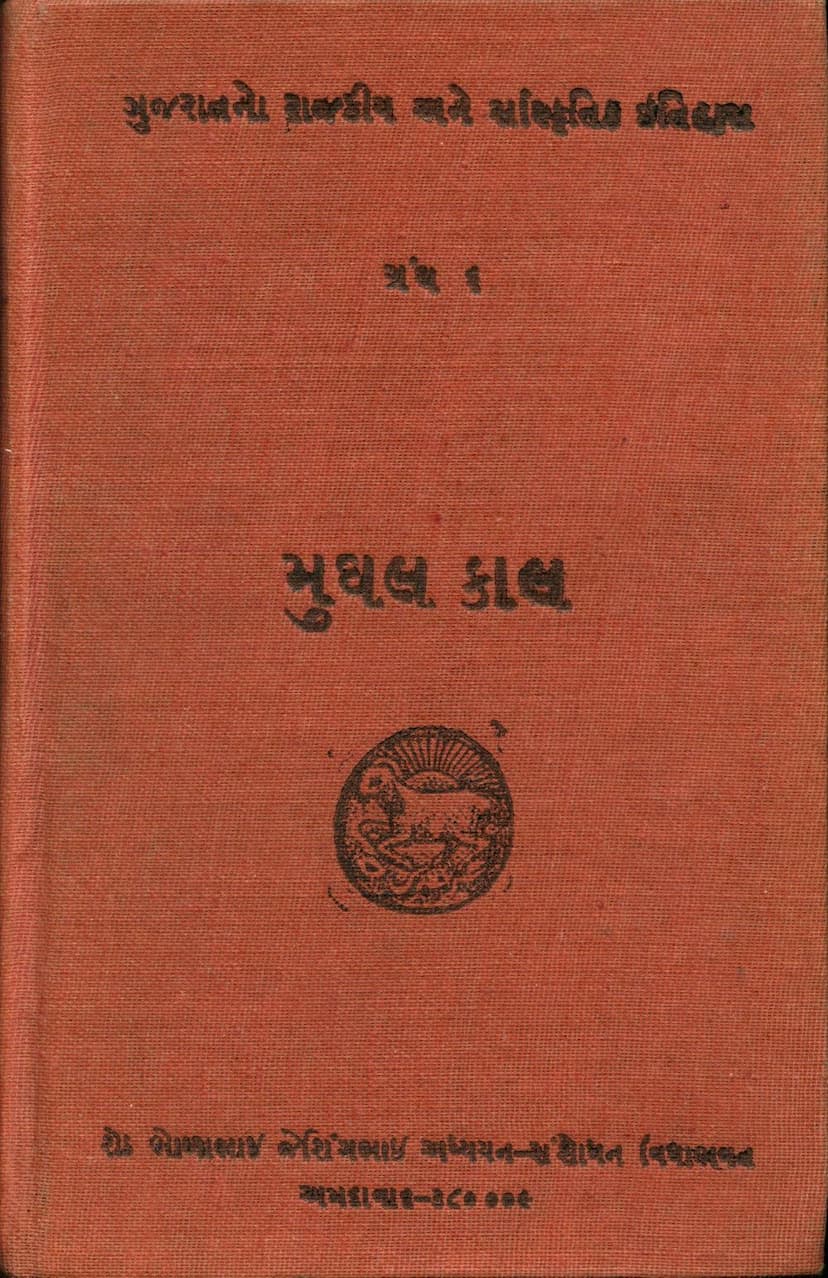Gujaratno Rajkiya Ane Sanskritik Itihas Part 06 Mughal Kal
Added to library: September 1, 2025

Summary
This Jain text, titled "Gujaratno Rajkiya ane Sanskritik Itihas Part 06 Mughal Kal" (Political and Cultural History of Gujarat, Volume 06: Mughal Period), authored by Rasiklal C Parikh and Hariprasad G Shastri and published by B J Adhyayan Sanshodhan Vidyabhavan, provides a comprehensive historical account of Gujarat during the Mughal era, spanning from 1573 to 1758 CE.
The book is structured into several volumes, with Volume 6 focusing on the Mughal period. It delves into various aspects of Gujarat's history, including:
Political History:
- Mughal-Gujarat Relations: Explores the initial contacts and the eventual establishment of Mughal rule in Gujarat.
- Reign of Emperors: Details the administrative periods of Mughal emperors from Akbar to Alamgir II.
- Contemporary States: Discusses the various contemporary kingdoms and dynasties in Kutch, Saurashtra, and other parts of Gujarat, including the Jadejas, Jhalas, Paramaras, Gohils, Khichis, Chauhans, Solankis, and the establishment of Nawabi rule in Junagadh, Radhanpur, Palanpur, and Khambhat.
- Foreign Settlements and Maratha Influence: Covers the presence of Portuguese settlements, the decline of their power, and the rise of Dutch, English, French, and Austrian colonies. It also traces the beginning and spread of Maratha power, including Shivaji's raids on Surat, the gradual infiltration of Maratha Sardar and Peshwas, and the eventual establishment of Gaekwad's authority in Vadodara.
Administrative System:
- Mughal Administration: Details the administrative structure of Gujarat under the Mughals, including the system of provinces (Suba), districts (Sarkar), administrative divisions (Paragana), ports, cities, and villages.
- Mint Operations: Discusses the minting of coins in various Gujarat mints, providing valuable insights for numismatic and political history.
Cultural History:
- Social and Economic Conditions: Analyzes the social and economic landscape of Gujarat during the Mughal period.
- Language and Literature: Examines the development of Persian as the administrative language, its popularity among Hindus, the progress of medieval Gujarati language, and the significant contributions of poets like Akho, Premanand, and Shambhal. It also highlights the contributions to Persian literature by Indian and Parsi writers and the role of Wali Gujarati in Urdu literature.
- Script and Religious Sects: Discusses the evolution of the Gujarati script from the Nagari script and the influence of Persian calligraphy. It also covers the popularity of Pushtimarg, the emergence of Sulaimani and Daudi sub-sects among the Vohras, and the growing importance of Navsari and Surat for Parsi settlements. It notes the relocation of the Parsi fire temple from Navsari to Udvada and the migration of some Parsees to Mumbai.
- Archaeological Findings: Mentions the lack of systematic excavation of Mughal-era settlements but notes the good study of tombs. It highlights the development of cities like Ahmedabad, Patan, and Surat, and the founding of Bhavnagar in Saurashtra. It also points to the addition of significant gardens and water reservoirs in Gujarat.
- Art and Architecture: Details the construction of beautiful temples in places like Khambhat, Kavi, Shatrunjay, Patan, Shankheshwar, Kumbhariya, Narayan-Sarovar, Dwarka, and Shamalaji. It also mentions the construction of significant Islamic buildings in Ahmedabad, Siddhpur, and Surat. The section on art covers stone, metal, and wood sculptures, particularly the artistic lattice work, and the regional styles of miniature paintings, with occasional mention of murals.
The book also includes appendices on:
- European Travelers' Notes: Records of observations made by European travelers in Gujarat.
- Genealogies: Provides genealogical tables of various ruling dynasties.
- Bibliographies and Glossaries: Includes reference lists and glossaries of terms.
The authors, Rasiklal C Parikh and Hariprasad G Shastri, acknowledge the support of the Gujarat State Government and the contributions of various scholars in making this comprehensive series possible. They also highlight the scarcity of scholars specializing in medieval and modern Indian history, particularly those with direct access to primary sources in Arabic and Persian, and encourage further research and training in these areas.
The preface also touches upon the challenges faced during the editing and publication process, including the slow pace of academic contributions from scholars and administrative delays related to government procedures for printing and publishing. Despite these hurdles, the work emphasizes the successful completion of the series through collaborative efforts and government grants.
In essence, this volume provides an in-depth and multi-faceted account of Gujarat during the Mughal period, integrating political, administrative, social, economic, linguistic, religious, and artistic aspects, supported by a wide range of source materials.